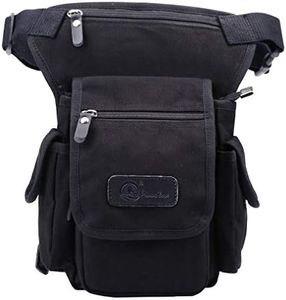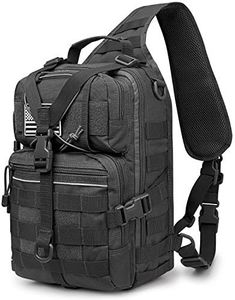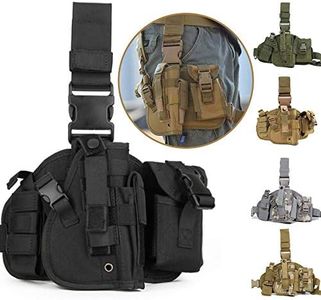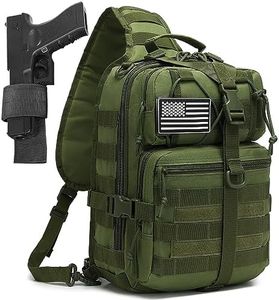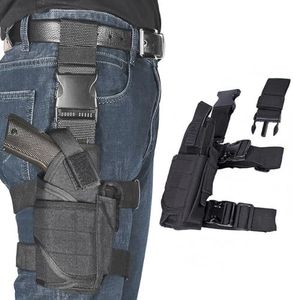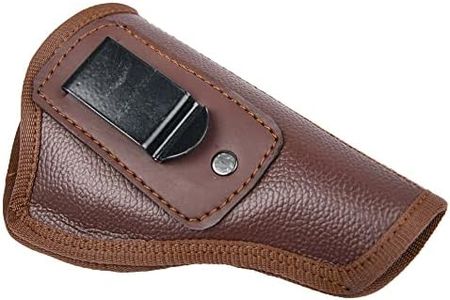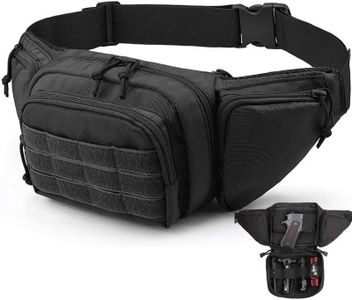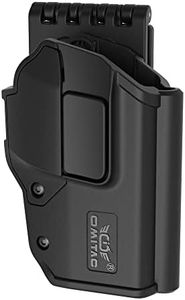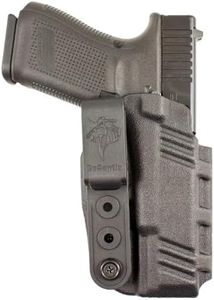We Use CookiesWe use cookies to enhance the security, performance,
functionality and for analytical and promotional activities. By continuing to browse this site you
are agreeing to our privacy policy
10 Best Concealed Carry Holsters
From leading brands and best sellers available on the web.Buying Guide for the Best Concealed Carry Holsters
Choosing the right concealed-carry holster is crucial for both safety and comfort. A holster’s job is to securely hold your firearm while making it accessible when needed and discreet enough to avoid unwanted attention. Because everyone’s body shape, wardrobe, and carrying habits are different, it’s important to understand the key features of various holsters before making a decision. The best holster should fit you and your lifestyle, offer control over your firearm, and ensure daily wear is both comfortable and safe.Holster MaterialHolster material refers to what the holster is made from, which is important because it affects comfort, retention, and concealment. Common materials include leather, synthetic (like nylon), or molded plastic (like Kydex). Leather is typically more comfortable and conforms to your body over time, but it can require break-in. Synthetic holsters are lighter and easier to maintain, but may not mold to your gun as well. Molded plastic holsters offer a precise fit and strong retention, though they can be less comfortable against the skin. Consider your daily activities, climate, and personal preferences when picking a holster material, as this will impact long-term use.
Carry PositionCarry position describes where on your body you intend to wear the holster. Common positions include inside-the-waistband (IWB), outside-the-waistband (OWB), appendix, shoulder, ankle, or pocket carry. Each location has its pros and cons related to accessibility, discretion, and comfort. For example, IWB offers good concealment but may feel snug, while OWB is more comfortable but harder to hide. Appendix carry offers quick access, while shoulder or ankle holsters are better for specific clothing choices or backup guns. Think about your regular clothing, typical environments, and comfort with drawing from different positions when picking the best carry position for your needs.
Retention MechanismRetention mechanism refers to how the holster keeps your firearm secure. This is essential for safety, preventing the gun from falling out, and controlling access. Retention can be passive (from a tight fit or friction), or active (with straps, buttons, or locking systems). Passive retention allows quicker access but may be less secure, while active retention offers more security but might slow down your draw. If you’re new to concealed carry, consider how comfortable you are with operating retention systems under stress, and balance speed of access with security according to your daily routine and risk level.
AdjustabilityAdjustability means how much you can fine-tune the holster for fit, angle, and ride height. Holsters with adjustable cant (angle) and ride height let you find the most comfortable and concealable setup. Adjustable retention allows you to control how tightly it holds the gun. If you plan to wear your holster in different conditions or with various outfits, adjustability becomes more important. Choose a holster that lets you make changes for your body shape and movement, ensuring comfort and a secure, consistent draw.
Concealment/PrintConcealment or 'printing' refers to how well the holster hides the shape of your firearm under clothing. Good concealment means less chance of your gun being noticed. Some holsters are designed to minimize bulk and keep the outline of the gun from showing (called printing), while others might be bulkier. Your typical clothing style and the size of the firearm will dictate which holster best suits your need for discretion. Evaluate how a holster looks under your usual clothes to make sure it keeps your firearm hidden comfortably.
Comfort and Sweat ProtectionComfort covers how the holster feels during daily wear, and sweat protection keeps moisture away from your firearm and body. Some holsters have features like sweat guards or padding to prevent irritation and shield your gun from sweat. Since concealed carry is often all-day carry, prioritize comfort, especially if you live in a warm climate or plan to carry for extended periods. Try to test how a holster feels against your skin and consider comfort features that suit your environment and wearing habits.
